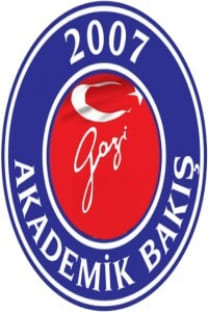A Historical Glance at the Problems of Afghanistan and Future Foresights
Ticaret merkezlerinin arasında ve ticaret yolları üzerinde yer alan Afganistan coğrafyası, tarih boyunca rekabet alanı haline gelmiştir. ülke “fetih otoyolu” olarak nitelendirilmiştir. Bunun yanında bölgenin birçok ordu tarafından istilası bölgeye olan göç dalgalarını körüklemiş ve bölgeyi etnik açıdan karmaşık bir duruma getirmiştir. Etnik yapının karmaşıklığı merkezi bir yönetimin oluşturulmasını zorlaştırdığı gibi ülkeyi dış müdahalelere de açık hale getirmiştir. Ülkedeki kökten dinci yapılanmanın bölgesel ve küresel etkileri ile komşusu, Pakistan ile etkileşimi de ayrı bir tedirginlik kaynağı olarak görülmektedir. Afganistan’ın yaşadığı sorunların çözülmesi geleceğini şekillendirecektir.
Anahtar Kelimeler:
Afganistan, Mevcut Sorunlar, Ulus inşası, Federalizm, Pakistan
Afganistan’daki Problemlere Tarihsel Bakış ve Gelecek Öngörüleri
Afghanistan’s location in the midst of trade centres and routes has been a competition field throughout history. Country qualified as “the highway of conquest”. On the other hand, invasions led to waves of migration, and made the region become ethnically complex. This complexity obstructed centralization, and rendered the country vulnerable to outside interferences. In addition, the regional and global effects of its fundamentalist religious structure, as well as its interaction with its neighbor Pakistan are seen as a source of discontent. To solving the problems of Afghanistan would form the future of the country.
Keywords:
Afghanistan, Current Issues, State Building, Federalism, Pakistan ,
___
- FLETCHER Arnold, Afghanistan: Highway of Conquest, Current History, and June 1950.
- OĞUZ Esedullah, Afghanistan (Afganistan), Cep Kitapları, Istanbul, 1999, (In Turkish)
- ARMAOĞLU Fahir, the Political History of XX: Century, 1914-1980, (20. Yüzyıl Siyasi Tarihi), Iş Bank Publications, Istanbul 1994, (In Turkish)
- RUBIN R. Barnett, The fragmentation of Afghanistan: State formation and collapse in the international system, Michigan: Yale University Press, 1995,
- CORDESMAN Anthony H., “Afghan War at End 2009: A Crisis and New Realism”, Centre for Strategic and International Studies, January 2010,
- TAYLOR Brian D., “Force and Federalism: Controlling Coercion in Federal Hybrid Regimes”, Comparative Politics, Vol. 39, No. 4 (Jul., 2007),
- GÜRER Cüneyt, “Drug Trafficking Originated from Afghanistan and Its Effect to International Security (Afghanistan Kaynaklı Uyuşturucu Kaçakçılığı ve Uluslararası Güvenliğe Etkileri)”, www.usak.org.tr/makale.asp?id=1157.
- KHURSHID Hasan, “Pakistan-Afghanistan Relations”, Asian Survey, Vol. 2, No. 7 (Sep.,1962),
- ABBAS Hassan, “A Profile of Tehrik-i-Taliban Pakistan”, CTC Sentinel, January 2008, V 1, i. 2,
- GRARE Frederic, “Pakistan: The Myth of an Islamist Peril, Carnegie Endowment Policy Brief”, http://www.carnegieendowment.org/publications/,
- DATE Jack, “CIA Director Leon Panetta: Serious Problems with Afghanistan War but Progress Being Made”, abcnews, 27 June 2010.
- RISEN James, “U.S. Identifies Vast Mineral Riches in Afghanistan”, the New York Times, June 13, 2010.
- BAJORIA Jayshree, “the Troubled Afghan-Pakistani Border“, http://www.cfr.org/publication/14905/troubled_afghanpakistani_border.html.Bijan
- GOODHAND Jonathan, “From holy war to opium war? A case study of the opium economy in north-eastern Afghanistan”, Central Asian Studies, 2000, 19 (2),
- GANNON Kathy, “Afghanistan Unbound”, Foreign Affairs, v. 83, No 3, May/June 2004,
- KATZMAN Kenneth, “Afghanistan: Post-Taliban Governance, Security, and U.S. Policy”, CRS Report for Congress, 2010.
- SHAHRANI Nazif M., ”War, Factionalism, and the State in Afghanistan”, American Anthropologist, New Series, Vol. 104, No. 3 (Sep., 2002),
- ROGERS Norman McL.,, “The Political Principles of Federalism”, The Canadian Journal of Economics and Political Science, Vol. 1, No. 3 (Aug., 1935),
- ROY Olivier, “Islamic Radicalism in Afghanistan and Pakistan”, UNHCR Emergency and Security Services, January 1, 2002,
- Omrani, “The Durand Line: History and Problems of the Afghan-Pakistan Border”, Asian Affairs, V 40, No. 2, 2009,
- ÇINARLI Özgür, “Afghanistan-Energy, Teror, Drug and Social Destruction (AfganistanEnerji, Terör, Uyuşturucu ve Toplumsal Yıkım”), http://www.hrc.hacettepe. edu.tr/af.htm
- SCHUCK Peter H., “Federalism”, Case Western Reserve Journal of International Law, Vol, 38:5, 2006,
- NYROP Richard F & SEEKINGS Donald M., “Afghanistan a Country Study”, Foreign Area Studies, The American University, p. 14, http://www.gl.iit.edu/govdocs/afghanistan/.
- S. M. M., Qureshi, “Pakhtunistan: The Frontier Dispute between Afghanistan and Pakistan”, Pacific Affairs, Vol. 39, No. 1/2 (Spring-Summer, 1966),
- “Afghanistan Country Profile (Afghanistan Ülke Profili)”, Avrasya Dosyası, Autumn-Winter 98-99, V. 4, issue 3-4, (In Turkish)
- Stratford, “Special Report: Afghanistan the Nature of the Insurgency”, June 01, 2009,
- Stratfor, “Afghanistan, Pakistan: The Battle space of the Border”, 2008. http://www.stratfor. com/ analysis/20081014_afghanistan_pakistan_battlespace_border.
- UNODC, “Addiction, Crime and Insurgency: The transnational threat of Afghan opium”, October 2009, p. 79.
- People’s Daily, “the production of opium reached 4.000 metric ton”, 2001, 16 February.
- www.worldbank.org./af.
- http://tolonews.com/en/afghanistan/895-russia-plans-to-send-troops-to-Afghanistan
- www.nato.int/cps/en/natolive/official_texts_68828.
- http://www.icosmaps.net/afghanistan_struggle/maps.
- http://english.aljazeera.net/news/asia/2009/02/200928101412448638.html.
- www.fas.usda.gov/country/Afghanistan,
- http://www.unhcr.org/49ba5db92.html,
- http://www. pajhwok.com
- http://geopolicraticus.files.wordpress.com/2009/09/afghanistan-ethnic-map.gif?w=325&h=411,
- ISSN: 1307-9778
- Yayın Aralığı: Yılda 2 Sayı
- Başlangıç: 2007
- Yayıncı: Hale Şıvgın
Sayıdaki Diğer Makaleler
İsrail Devleti’nin İlanından Önce David Ben-Gurion’un Filistin’i Yahudileştirme Politikası
A Historical Glance at the Problems of Afghanistan and Future Foresights
Türkiye’de Online İşbirliği Ağ Modeline Dayalı Bir Kaynakça Yönetim Uygulaması
Köroğlu Destanı’nda (Azerbaycan Kolu) Kahraman ve Karşı Kahraman Tipleri
Yeni İstanbul Gazetesi Gözünden 27 Mayıs’ın Anlamı
Bilinmeyen Yönleriyle Kafkasya Müslümanlarının Bakü’deki İlk Kongresi (28 Nisan-3 Mayıs 1917)
Türk Dış Politikasında Süreklilik Unsuru Olarak Siyasal Rejim
